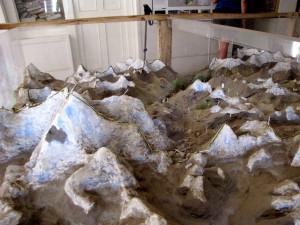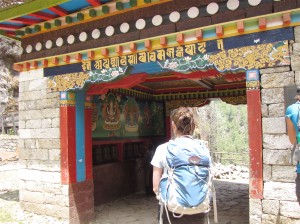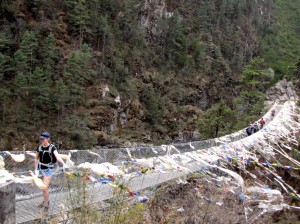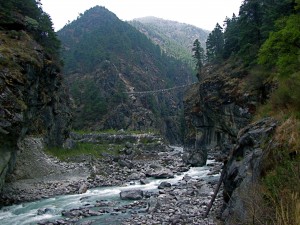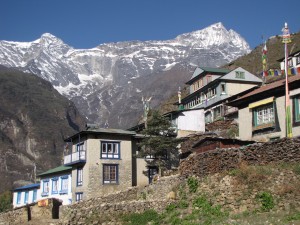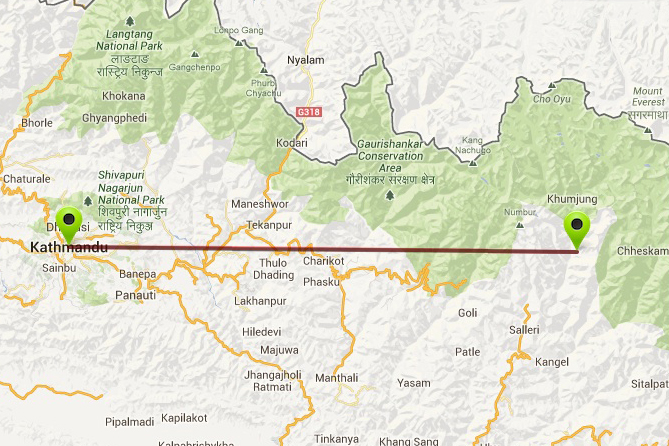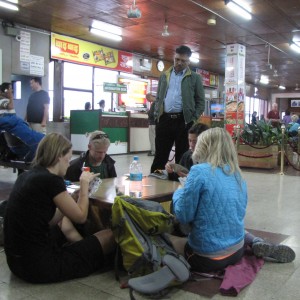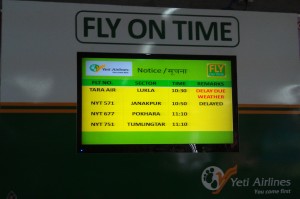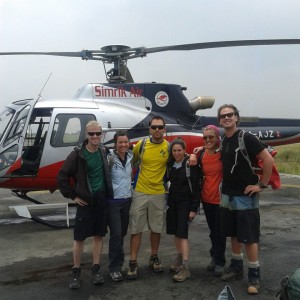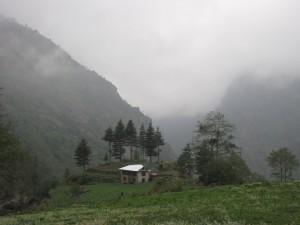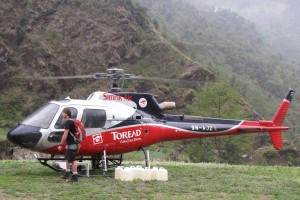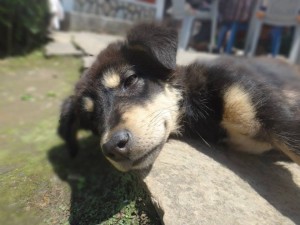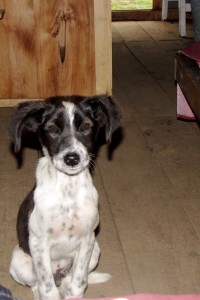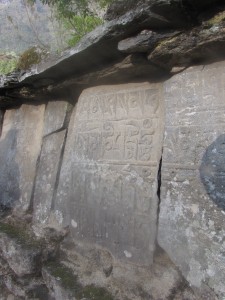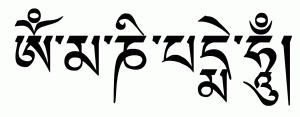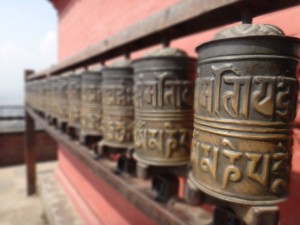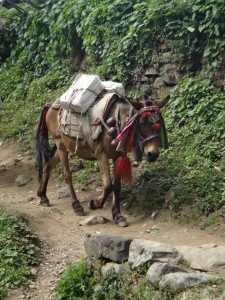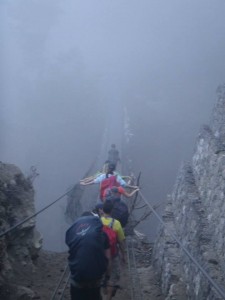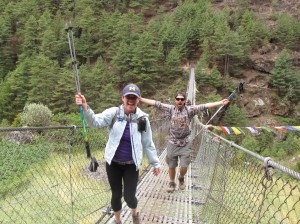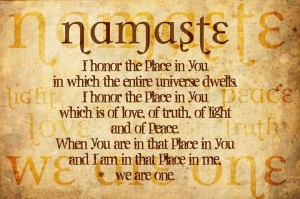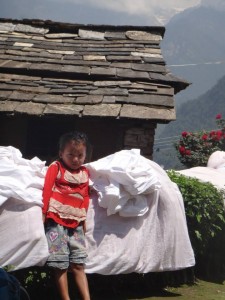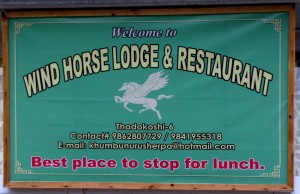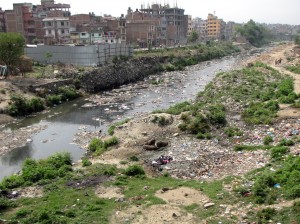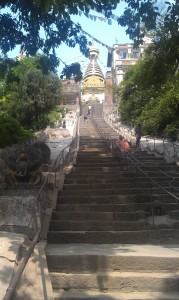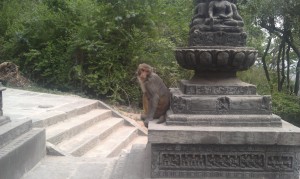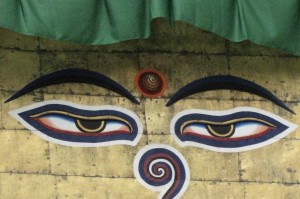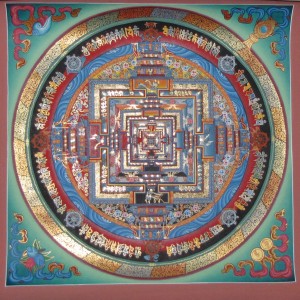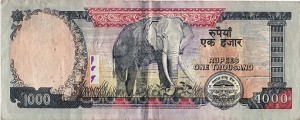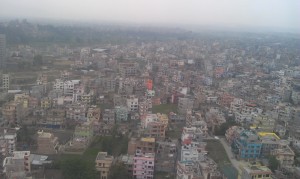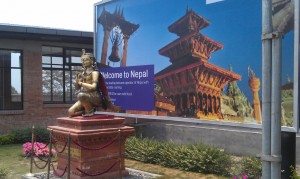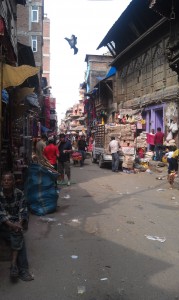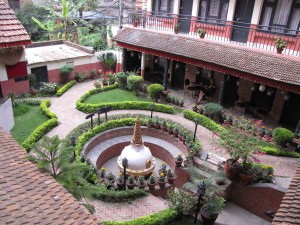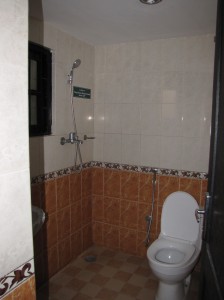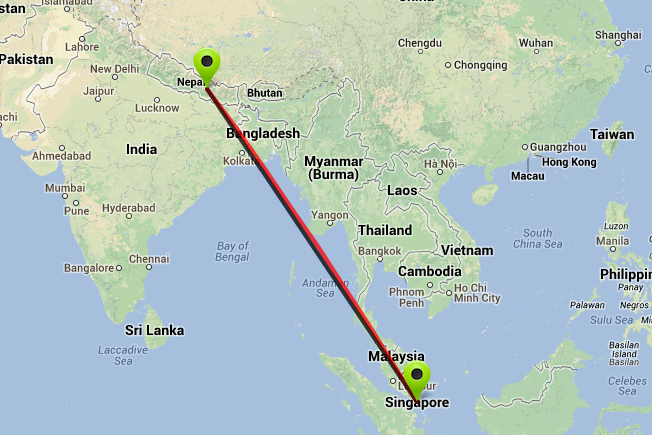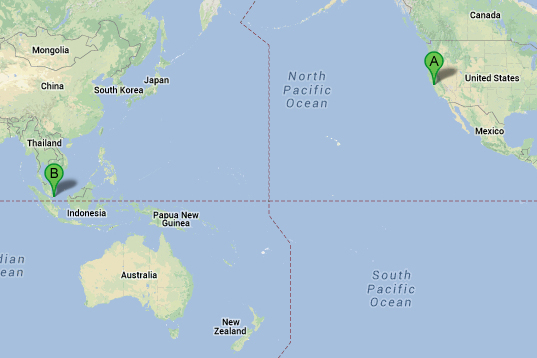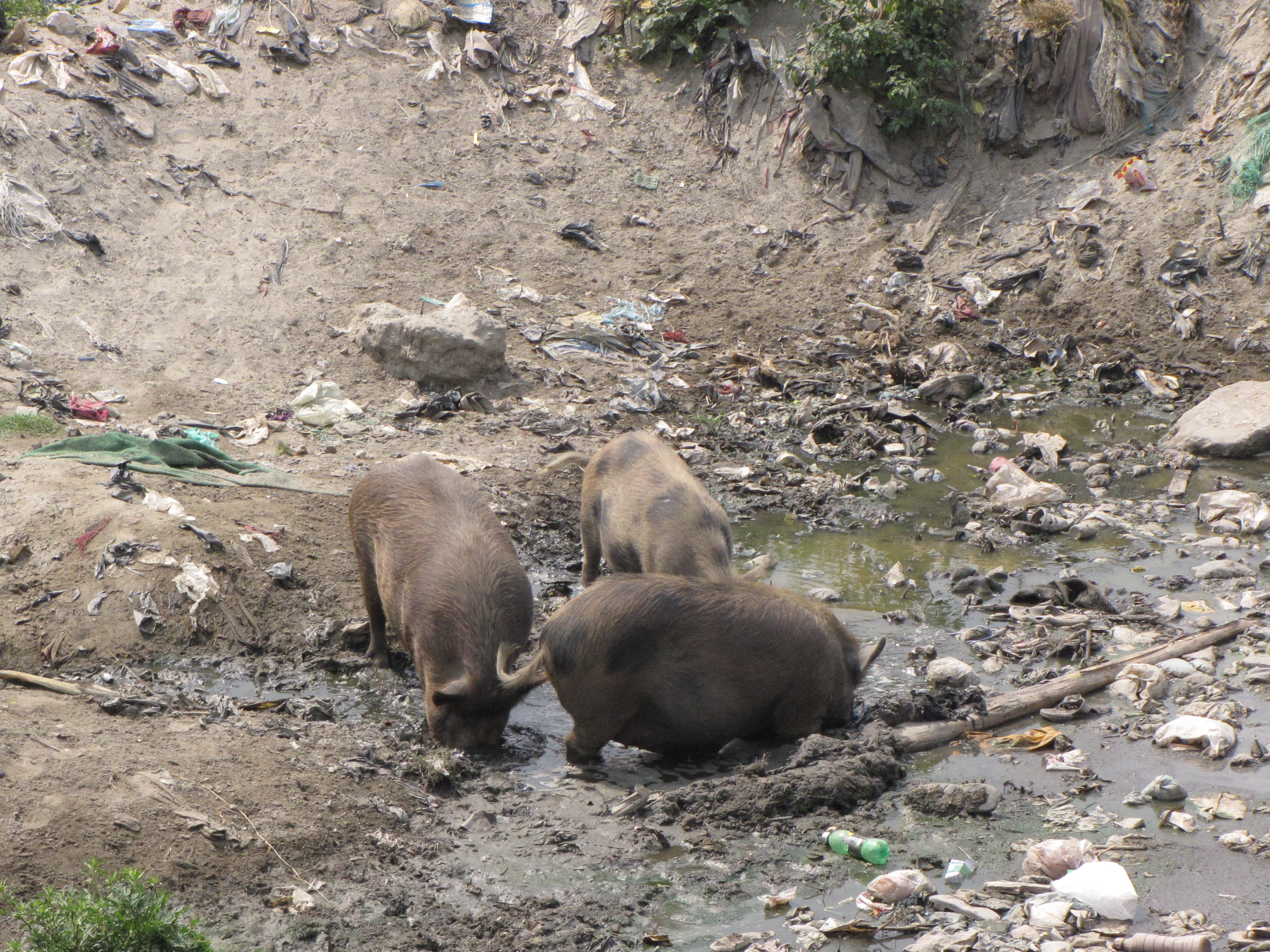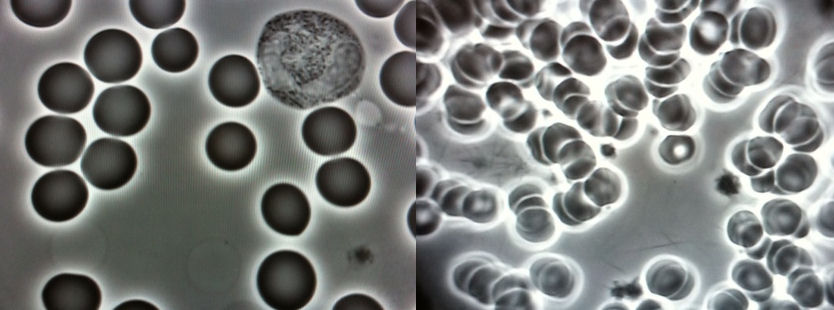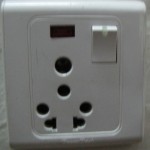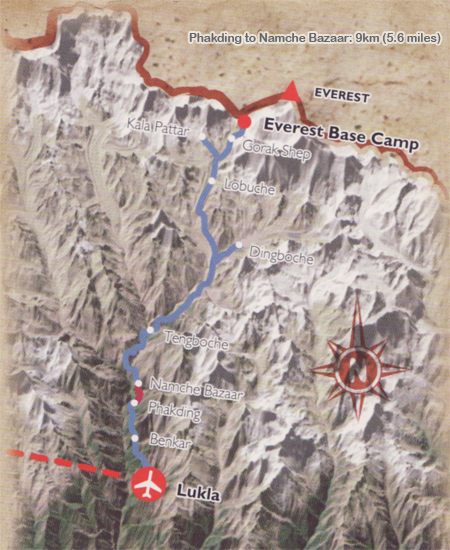 I was up with dawn and the sweetly singing mountain birdies, a pleasant change from barking and crowing. Everyone else was still asleep so rather than stir too long and wake people up, I crept downstairs to read. The beauty and surreality of where I was made it hard to focus. I started to wonder what I was doing reading a book about someone else’s experience in the Himalayas when my own real-life experience was all around me. So I just sat there and soaked it all in.
I was up with dawn and the sweetly singing mountain birdies, a pleasant change from barking and crowing. Everyone else was still asleep so rather than stir too long and wake people up, I crept downstairs to read. The beauty and surreality of where I was made it hard to focus. I started to wonder what I was doing reading a book about someone else’s experience in the Himalayas when my own real-life experience was all around me. So I just sat there and soaked it all in.
We met in the common room for breakfast. The night before I decided to keep with the Nepali theme and ordered Tibetan bread and honey, and was very happy with the decision. Other typical breakfast choices were omelets, porridge, toast, and pancakes.
At the airport in Kathmandu the day before, I had my hiking poles attached to my day pack, then thought better of trying to get them on the flight as a carry-on. The porter bags were all piled on a cart, so I stashed my poles in the bag at the top for the sake of convenience. They ended up being my only piece of luggage that made it to the mountains the day before.
When we gathered to leave, someone pointed out the rubber snow basket from a hiking pole was sitting on the bench where my pack had been a moment before. I looked down and sure enough, both of the snow baskets from my poles were missing. The group headed down the stone stairs from the courtyard by our lodge toward the village, and I quickly backtracked to the building where we slept to check for the other one. We were separated maybe a minute.
When I didn’t find it, I hurried down the stairs to catch up. On reaching the bottom, I saw nothing but empty village. Uh oh. I checked back the way we came (right) to see if they picked up the trail again that way. There were some other foreigners outside having breakfast at a different place, and I asked them if they saw a group go by. They said no, and then felt sorry for me and started asking where I was trying to go. I just told them thanks and took off in the other direction (right, then right). Here I found some locals who actually didn’t speak English (most did in our “tourist tunnel”). Okay, that’s enough of this nonsense. Back up to the common room I went to get directions. They told me when I went back downstairs to go right, right and right again and then I’d see the trail and another suspension bridge.
Right, right and right. That explained how the group disappeared so quickly. I jogged through the village and quickly caught up with Bibak (our third guide) who had come back to find me. I told him what happened and when we caught up with the rest of the group who was waiting at the suspension bridge, repeated the story. Quite an embarrassing way to start the day.
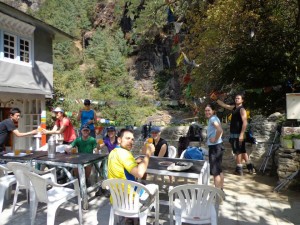
Hot lemon at the first tea stop.
From left: Bibak, Me, Ele, Mike, Sara, Kevin, Amanda, Stacy and DK
Photo credit: Dovile Soblinskas
We enjoyed some hot lemon on our first tea stop. My mind was still brimming with ideas from the book Abundance and how so many of them would improve the lives of people all over the world, especially in places like Kathmandu.
“How can I participate in making it happen?” I wondered.
Ele made a patient listener. She mentioned someday she’d like to teach and I told her she’d be great. Education was a subject both of us were interested in, and I got to learn a bit more about how kids were taught in New Zealand (not much different than the States, unfortunately).
We stopped again at a sort of museum with a scale model of the mountains surrounding Everest. What’s interesting for a fellow Californian to note is that Mt. Whitney wouldn’t even register as one of the little brown 18,000 ft. / 5,500 m molehills below the 29,029 ft. / 8,848 m behemoth known as Mt. Everest / Sagarmatha / Chomolungma.
Soon after that was the Khumbu National Park entrance. We read the posted rules for being in this sacred Sherpa valley and World Heritage Site:
- Refrain from taking life.
- Refrain from anger.
- Refrain from jealousy.
- Refrain from offending others.
- Refrain from taking excessive intoxicants.
Good advice anywhere, actually.
At our next stop there was a delicious lunch of Sherpa stew and spring rolls. We talked about hypnosis and later Mike told us about his new girlfriend and how she was a music teacher.
“We’re opposites, I have no musical talent,” he was saying.
How sad.
“Is she working on you?” I asked.
He laughed and said, “All the time.” (Mike had a great laugh. Sara said some old classmates tried to add a “best laugh” category for the yearbook just so he could win it.)
I told a story about some girls I went to school with and how we had to teach them to find their rhythm by physically picking up their foot and putting it down in time to the beat.
“They did pick it up eventually,” I said.
“I don’t get how you can have NO rhythm,” I mused out loud, thinking that the universe is essentially nothing but rhythm/vibration, and it’s impossible to be separate from it. We feel the beat of our own hearts every day.
“Thanks a lot!” said both Mike and Sara, who apparently at some point had bought and sold a story to themselves that they had none.
Doh! I’d been in the park less than a day and had already broken rule #4. There was the Rakshasa influence again. Sometimes I am so inappropriate I offend myself, partly why I tend to keep quiet until I get to know you. Or until alcohol enters the equation.
(Mike and I would find out later he was both a Deva and a logical communicator. I’m an emotional communicator. This makes understanding each other slightly more challenging.)
“What I’m trying to say is I don’t believe you,” I told them. We may not be born with perfect pitch and the ability to play Beach Boys drum solos out of the womb like my musician uncle, but all of us can learn and improve.
“You’ll see in Lukla,” he said. It was only day four, and we were already thinking about the party at the end.
“Okay,” I told him, resolving to prove him perfectly capable given the opportunity. This ended up not being necessary, he’d prove himself musically adept long before then.
We continued along the river and spotted the beautiful Hillary Bridge, suspended across a gorge as all suspension bridges tend to be, but this gorge was especially picturesque and this bridge was especially adorned with thousands of prayer flags and scarves to honor Sir Edmund Hillary.
Besides being the first to summit Everest, Sir Ed was extremely influential in the region. He founded the Himalayan Trust which helped set up and now maintains schools, hospitals, and forestry services.
After the Hillary Bridge we roundhouse-kicked one of the largest elevation gains of the trip, including some good old-fashioned switchbacks, up to Namche.
Somehow through the dust DK spotted the rubber piece to a hiking pole that exactly matched the one I lost and got lost trying to find. He picked it up and fastened it to my pole. Wow, problem solved, and fast! I marveled at how effortlessly the universe works when we let it. Interestingly enough, mine wasn’t the only hiking pole DK rescued. He’d do the same for Dovile on the way down. I hoped whomever lost the piece that found its way onto my pole ended up finding my lost piece later.
Just before Namche we had to stop and check in to the park. They made us write down the kind of camera we had in case it got lost. A precaution so we wouldn’t pick up a free camera from the lost and found on the way out.
Namche Bazar was a beautiful village. At 11,286 ft. / 3,440 m we’d be sleeping higher than Telescope Peak (11,043 ft. / 3,366 m); the highest point I could remember climbing as an adult.
We were staying at a place called The Nest for the next two nights. Dovile and I were reunited with our porter bag. When we opened the door to our room, I debated making priority one stopping the flow of kerosene fumes seeping in the window or hopping in the shower. As there was a huge clear glass window on the door to the bathroom, I opted first to stuff our drapes in the cracks of the window while I devised a makeshift bathroom curtain.
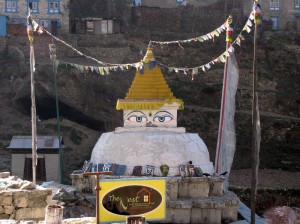
“The stupa is a monument, shrine, and reliquary that traditionally derives from the Buddha’s tomb, but has come to symbolize existence. On a square red base (signifying earth) sits a large white dome (water) with a sort of spire (fire) crowned with a lunar crescent (air) and a solar disc (space); such structures guard the approaches to towns and villages throughout the Buddhist Himalaya.”
Peter Matthiessen, The Snow Leopard
What I came up with was using a bit of my duct tape (this was use #1, see gear list) to tape my empty potato sack up on the window. When I took a shower, I learned I had failed to consider one very important detail. I had taped it to the inside of the window and the steam from the shower immediately caused it to fall off. At least the steam also fogged up the window somewhat.
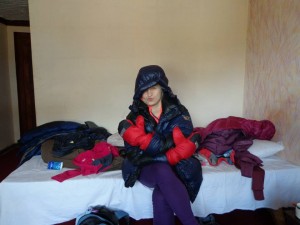
Dovile rockin’ one of the enormous expedition weight rental coats and puffy gloves.
Photo credit: Dovile Soblinskas
For take two, I used a bit more tape and taped it to the outside of the door. Win. The curtain came in handy later when DK stopped by with our rental coats and walked in when one of us was still in the shower.
The rest of the night was typical tea house. We had dinner and more tea in the common room. Many tea house common rooms would be wallpapered with t-shirts bearing the names of previous trekkers and this one was no exception. We socialized a bit and then headed back to the rooms for some reading or writing time before bed.

